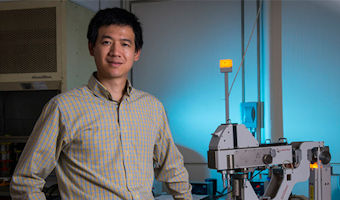The Condensed Matter & Surface Sciences Colloquium Series presents Gang Chen of Ohio University on “Physics of Amorphous Memristor Materials,” on Thursday, April 21, at 4:10 p.m. in Walter 245.
Abstract: A memristor is a type of resistive random access memory (RRAM) that shows threshold switching in electrical resistance under external excitation. Compared to the flash memory, the RRAM has advantages of higher switching speed, lower power consumption, better scalability and higher endurance, and it has become the major player in the field of non-volatile memory. Amorphous chalcogenides (i.e., alloys with group VI elements in the periodic table except for oxygen) such as Ge-Sb-Te abd Ge-Se play an important role in the RRAM, and they have been commercially used in phase-change memory (PCM) and conductive-bridging random access memory (CBRAM), respectively. In spite of their successful commercial applications, the atomistic mechanisms behind the fast switching of the amorphous chalcogenides remain elusive. In this talk, I will review the basic physics behind the PCM and CBRAM devices and discuss unsolved scientific problems regarding to the switching mechanisms of the materials. Results from our recent studies of the switching mechanisms of amorphous Ge-Sb-Te and Ge-Se in PCM and CBRAM devices will be presented.




















Comments